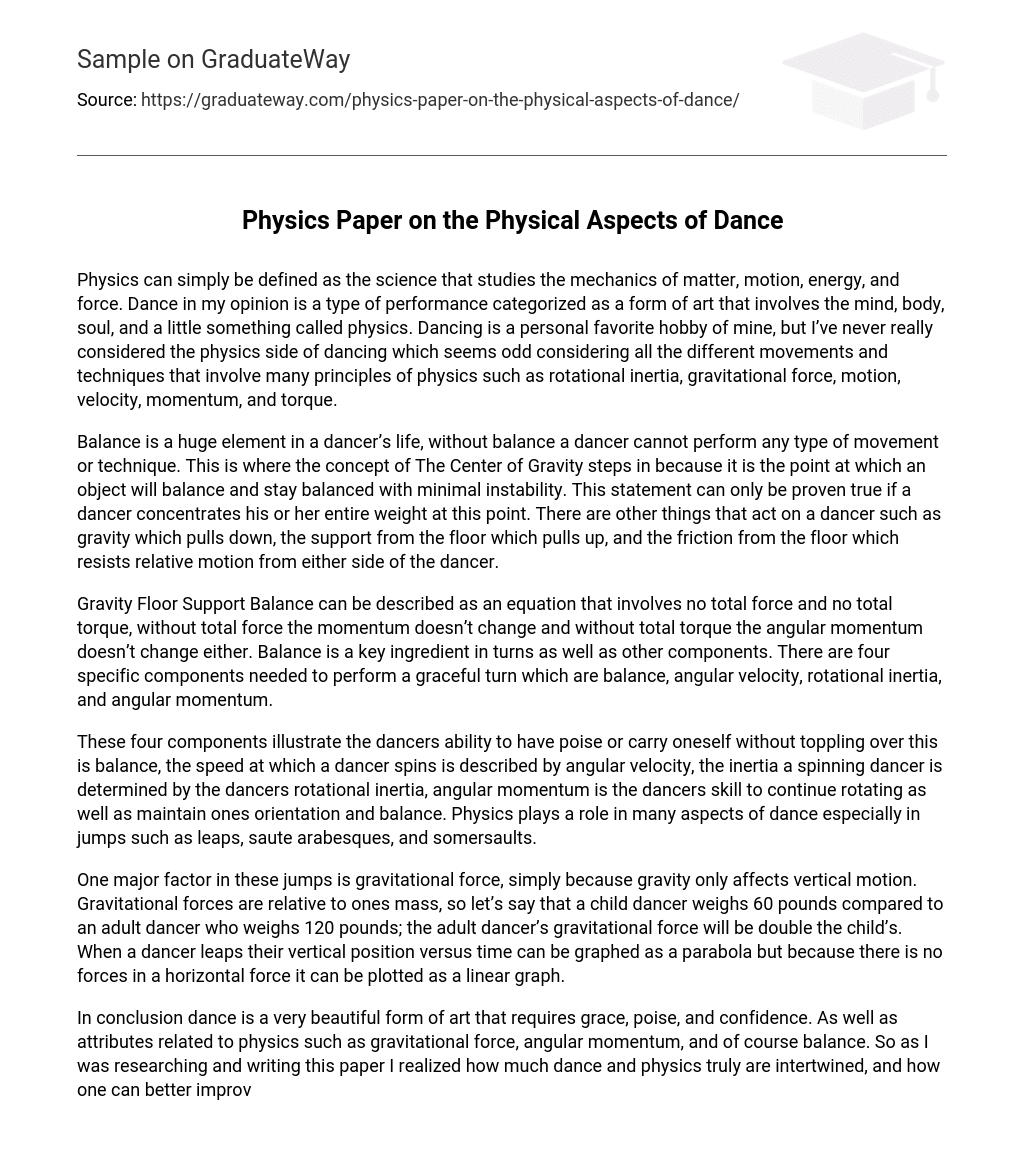Physics is the scientific study of matter, motion, energy, and force. In my opinion, dance is an art form that integrates the mind, body, soul, and physics. Despite being a personal hobby of mine, I haven’t fully explored its connection to physics. It’s peculiar when you consider the different movements and techniques that encompass principles such as rotational inertia, gravitational force, motion, velocity, momentum, and torque.
Balance is important for dancers as it impacts their ability to perform various movements and techniques. The Center of Gravity is vital in maintaining balance by determining the point at which an object can stay stable with minimal instability. Dancers must concentrate all their weight on this point to demonstrate its significance. Other factors that affect a dancer’s balance include gravity pulling downwards, support from the floor pushing upwards, and friction from the floor resisting movement in any direction.
Gravity Floor Support Balance refers to the equation that encompasses no total force and no total torque. When there is no total force, the momentum remains unchanged, and without total torque, the angular momentum also remains constant. Balance plays a vital role in turns and other elements. To execute a smooth turn, four essential components are required: balance, angular velocity, rotational inertia, and angular momentum.
Balance, angular velocity, rotational inertia, angular momentum – these are the four components that showcase a dancer’s ability to remain poised and steady. In the realm of physics, balance refers to the capability of carrying oneself without toppling over. Angular velocity defines the speed at which a dancer spins. The inertia of a spinning dancer is measured by their rotational inertia. Lastly, angular momentum captures the dancer’s skill in sustaining rotation while also maintaining orientation and balance. Physics has a significant influence on various aspects of dance, particularly in jumps like leaps, saute arabesques, and somersaults.
The vertical motion of a dancer is greatly influenced by gravitational force. Gravitational force is determined by the dancer’s mass, meaning that a child dancer weighing 60 pounds will experience half the gravitational force compared to an adult dancer weighing 120 pounds. When a dancer jumps, their vertical position versus time can be represented by a parabolic graph. However, since there are no horizontal forces involved, the horizontal motion can be represented by a linear graph.
Conclusively, dance is an exquisite art form that necessitates elegance, composure, and self-assurance. Moreover, it incorporates elements connected to physics like gravity, angular momentum, and undoubtedly balance. While researching and composing this paper, I comprehended the deep interconnection between dance and physics, and how understanding the physical mechanics of dance can enhance one’s dancing abilities.
Reference
https://1.1.1.1/login.html?redirect=ed.fnal.gov/trc_new/demos/present/physofballet.pdf





